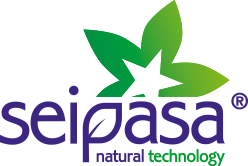Thrips control in roses: strategy, action and results

Thrip, at different stages of development, on rose cultivation.
The floriculture sector is of great importance worldwide. Colombia and Ecuador are the second and third largest exporters of flowers per year, accounting for 24% of the world market share and supplying major markets such as the United States, Russia and the Netherlands (Chambers, 2024).
However, despite its great importance, the production of ornamental flowers has been affected by various pests that reduce the aesthetic and commercial quality of the product and increase the proportion of domestic or waste flowers. One of the most representative and limiting pests are thrips (Semillas valle, 2021).
Thrips are one of the most challenging polyphagous pests in the world, as they are insects that, due to their behaviour and habits, can affect a wide range of crops such as ornamental plants, causing damage that reduces the commercial value of the end product (flower) (Carrizo, et al., 2008). The destructive capacity of this pest is a problem that has been aggravated by the resistance it has acquired, largely due to the successive applications of chemical synthesis products that favour the development of resistance to insecticides (Rodríguez et al., 2003).
The repeated use of pesticides in agricultural production systems, in addition to causing pest resistance and damage to human health and the environment, can have a collateral effect on natural enemies and cause ecological imbalances (Ruiz-Jimenez et al., 2021). An alternative to this problem is the use of natural products derived from plants, which are generally biodegradable and do not cause imbalances in ecosystems (Lannacone and Reyes, 2001).
Respect for the environment and biodiversity
Given the steady decline in insect biodiversity, investment in environmentally friendly means of pest control should be a priority. Actions involving the various levels of action in decision-making must be promoted to ensure that this strategy, which has been used for decades in Europe and is now gaining ground in Latin America, becomes increasingly effective against the pests that attack crops in this region.
Pest control is becoming increasingly difficult, as intensive crop production and the lack of crop rotation increase biological imbalances in the agricultural environment. Future pest control must be carried out without further damage to biodiversity and environmental degradation, and with less reliance on synthetic pesticides.
Seipasa, a pioneering Spanish company in the formulation and development of botanical and microbiological treatments for crop protection, biostimulation and nutrition of crops, has launched Pirecris.
Pirecris is a natural broad-spectrum insecticidal bio-input: it is a unique patented formulation that ensures maximum insecticidal efficacy thanks to its direct relationship with the concentration of PI and PII molecules. It also contains natural antioxidants that provide stability against light and temperature drift, increasing its shelf life.
Maximum efficacy against thrips
Pirecris produces an immediate shock effect thanks to its dual mode of action (IRAC 3A), neurotoxic and physical, which affects the normal functioning of the insect’s nervous system and removes its protective layer, softening its exoskeleton and facilitating the penetration of its molecules through cell membranes.
Pirecris has demonstrated high efficacy of up to 100% in the laboratory and 85-90% in the field. As a contact product, excellent coverage is required at the time of application.
Field results
Field results can be seen in this efficacy trial for adult and larval thrips control developed in the municipality of Tocancipá, Colombia, the graphs and results of which are shown below.

Graph 1. Efficacy of Pirecris control on larval thrips (Frankiniella sp.) on roses in the municipality of Tocancipá, Colombia.
Graph 2. Efficacy of Pirecris control on adult thrips (Frankiniella sp.) on roses in the municipality of Tocancipá, Colombia.
In this other Pirecris trial to control adult and larval thrips in the municipality of Cota, Colombia, the graph shows the percentage of stems affected by thrips in each of the treatments. It can be seen that in treatment T1 an average of 0.4% of flowers were affected. In treatment T2 the average percentage of flower affected is 0.8% and remains in this range for the moment. It can also be seen that in treatment T3 the average percentage of flowers affected is 1.4% with a tendency to decrease.
Graph 4. Number of affected stems per treatment in rose crop, Cota, Colombia. Jeyson Cárdenas PTA-Agromilenio.
Pirecris is a new unique and patented alternative for insect control, developed under Seipasa’s Natural technology® model. It is a product that, thanks to its formulation, helps to reduce the chemical load of the plant, avoids the generation of resistance in the pest and is the formula with the best compatibility with the auxiliary fauna.
References:
-
Carrizo, Paola, Gastelú, Cecilia, Longoni, Pablo, & Klasman, Rolando. (2008). ESPECIES DE TRIPS (INSECTA: THYSANOPTERA: TRIPIDAE) EN LAS FLORES DE ORNAMENTALES. Idesia (Arica), 26(1), 83-86. https://dx.doi.org/10.4067/S0718-34292008000100012
-
Lannacone, J. y Reyes, M. 2001. Efecto de la rotenona y neem sobre Bemisia tabaco Gennadius (Homoptera: Aleyrodidae) y Liriomyza huidobrensis Blanchard (Diptera: Agromyzidae) plagas del tomate en el Perú. Agronomía Trop. 51(1):65-79.
-
Ruiz, J. K. Z.; Osorio, O. R.; Hernández, H. L. U.; Ochoa, F. A. A.; Silva, V. R. y Mendez, Z. G. 2021. Actividad acaricida de extractos de plantas contra el ácaro rojo de las palmeras Raoiella indica (Acari: Tenuipalpidae). Rev. Soc. Entomol. Arg. 80(1):33-39.
-
Extraído de https://www.intagri.com/articulos/fitosanidad/manejo-de-trips-en-el-invernadero - Esta información es propiedad intelectual de INTAGRI S.C., Intagri se reserva el derecho de su publicación y reproducción total o parcial.
-
https://semillasvalle.com. (n.d.). Semillas Valle. Semillasvalle.com. Retrieved February 5, 2024, from https://semillasvalle.com/site/blog/los-trips-y-su-afectacion-en-los-cultivos-de-rosas/
-
Chambers, D. (2024, January 1). Líderes Mundiales En Exportaciones De Flores Cortadas | 2024. Es.ripleybelieves.com. https://es.ripleybelieves.com/global-leaders-in-cut-flower-exports-6016#:~:text=L%C3%ADderes%20Mundiales%20En%20Exportaciones%20De%20Flores%20Cortadas%201





